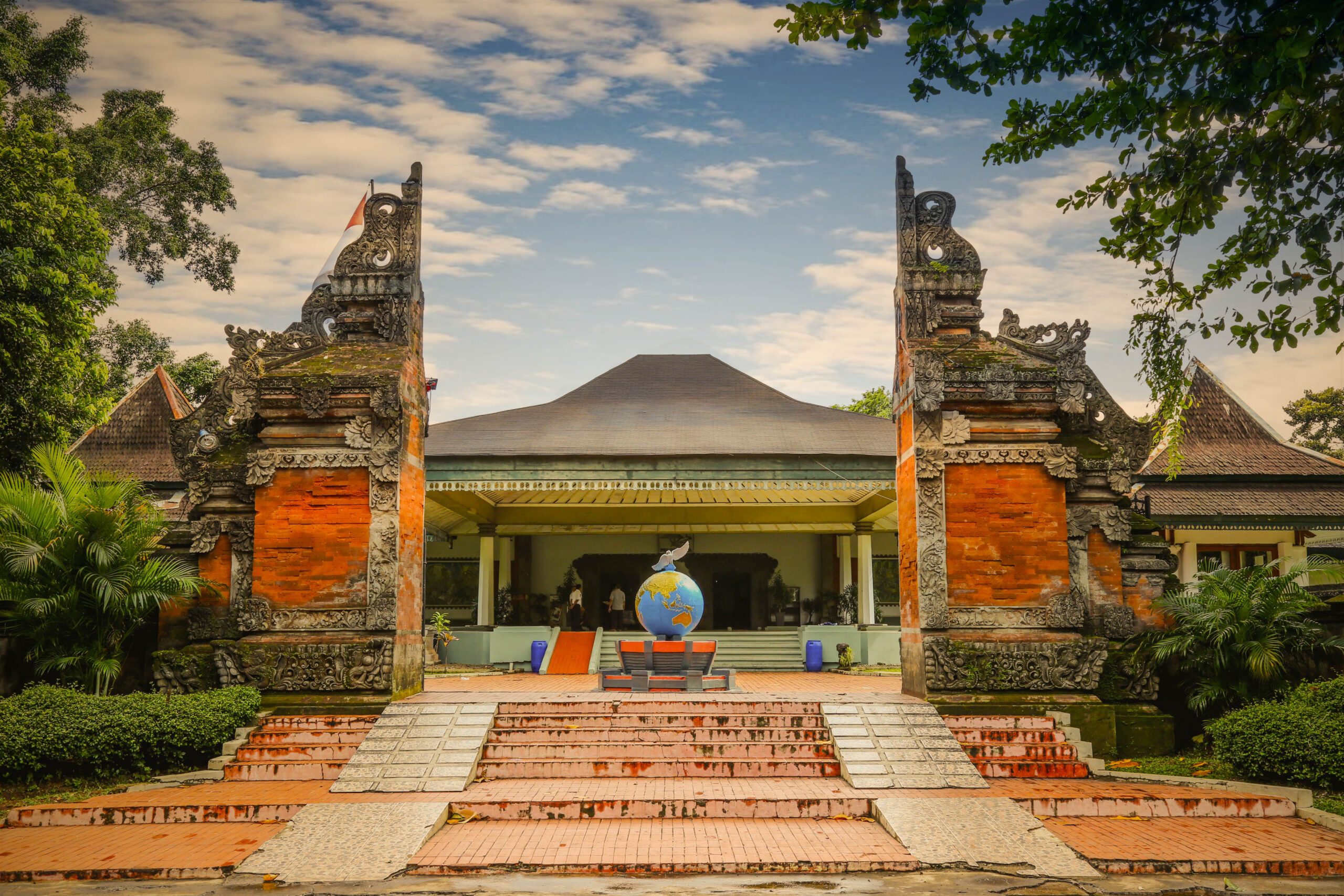More than just proof of postage payment, stamps are cultural artifacts that reflect the history, identity, and communication development of a nation. At the Stamp Museum, visitors are invited to explore a global collection of stamps and gain insight into the evolution of communication media and printing technology.
The idea for the Stamp Museum began with Ibu Tien Soeharto’s visit to a PT Pos Indonesia (Persero) stamp exhibition during the 6th Asia Pacific Scout Jamboree in Cibubur in June 1981. Inspired by this experience, the museum was officially established at TMII and inaugurated by President Soeharto on September 29, 1983.
Occupying a 9,590 m² plot, the museum’s architecture features a blend of Balinese and Javanese carvings and sculptures. The structure consists of two wings: the right wing serves as the management office and meeting hall, while the left wing functions as an additional post office under PT Pos Indonesia (Persero). The museum’s entrance is marked by twin gateways inspired by the Candi Bentar style, traditionally used to separate the outer and inner courtyards of temple complexes. At the front of the museum stands a sculpture of a globe and a dove carrying a letter in its beak, symbolizing the global mission of Indonesia’s national postal service.
Upon entering, visitors are greeted by stories from traditional wayang (shadow puppetry). A statue of Hanoman represents Wayang Dhuta Dharma, the messenger figure, while two Balinese paintings by Drs. Wayan Sutha S. illustrate the history of correspondence before paper was widely used.
Inside the Stamp Museum, various exhibition rooms offer different collections and thematic displays. These include exhibits on the process of stamp creation and cylinder printing, stamp collections from the Dutch and Japanese colonial periods through Indonesia’s independence, and a selection of commemorative stamps and souvenir sheets from 1950 to 1993. Visitors can also explore stamps categorized by era and theme, including those focused on scouting and sports. In the final gallery, visitors can view a special exhibition that captures the moment Ibu Tien Soeharto signed the First Day Cover of the 6th International Stamp Exhibition held in Cibubur.












